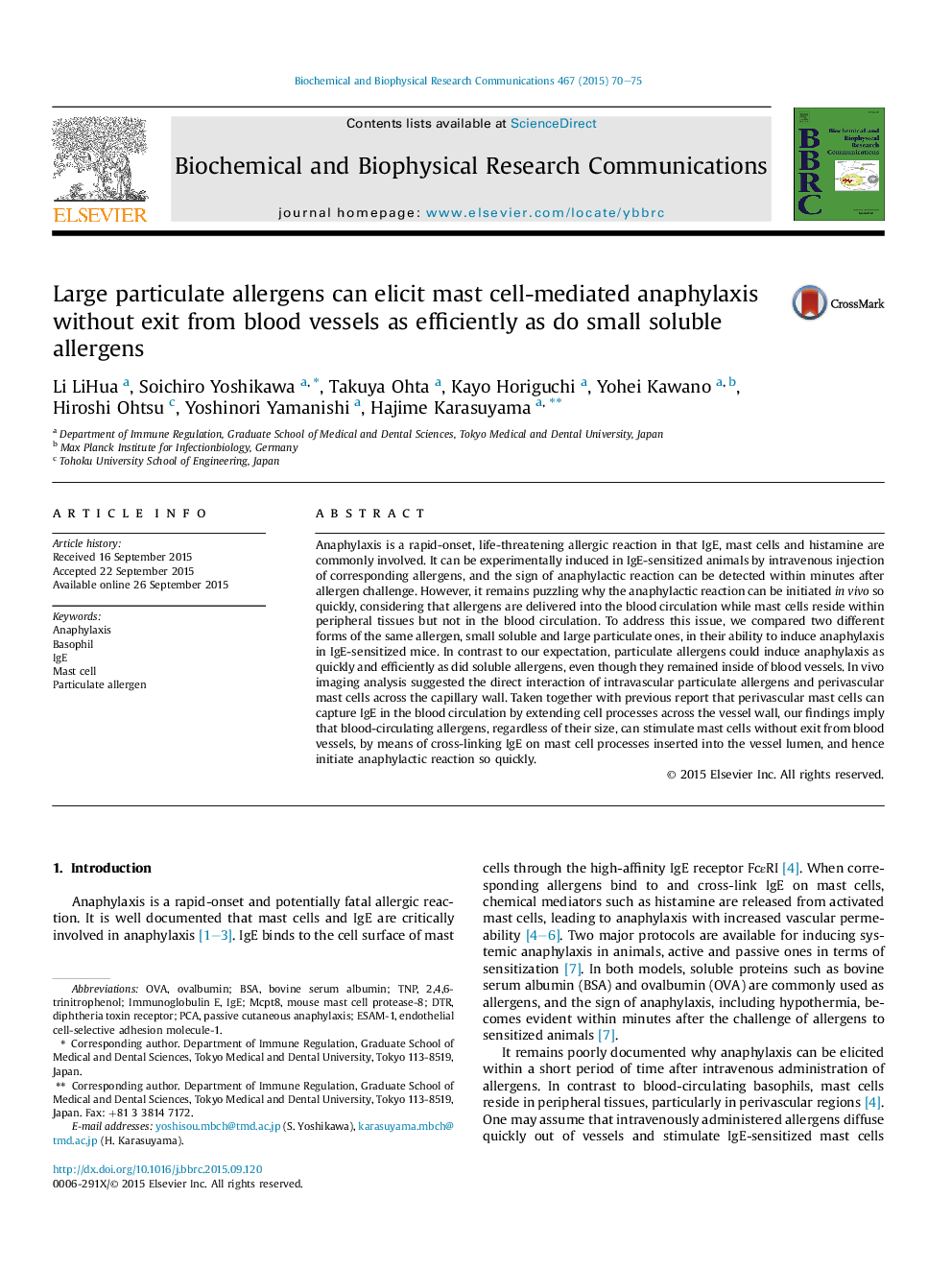| Article ID | Journal | Published Year | Pages | File Type |
|---|---|---|---|---|
| 1927952 | Biochemical and Biophysical Research Communications | 2015 | 6 Pages |
•Large particulate allergens can induce anaphylaxis without exit from blood vessels.•Particulate allergen-elicited anaphylaxis is dependent on IgE and mast cells.•Intravascular allergens interact with perivascular mast cells across the vessel wall.•These findings may explain why anaphylaxis occurs shortly after allergen challenge.
Anaphylaxis is a rapid-onset, life-threatening allergic reaction in that IgE, mast cells and histamine are commonly involved. It can be experimentally induced in IgE-sensitized animals by intravenous injection of corresponding allergens, and the sign of anaphylactic reaction can be detected within minutes after allergen challenge. However, it remains puzzling why the anaphylactic reaction can be initiated in vivo so quickly, considering that allergens are delivered into the blood circulation while mast cells reside within peripheral tissues but not in the blood circulation. To address this issue, we compared two different forms of the same allergen, small soluble and large particulate ones, in their ability to induce anaphylaxis in IgE-sensitized mice. In contrast to our expectation, particulate allergens could induce anaphylaxis as quickly and efficiently as did soluble allergens, even though they remained inside of blood vessels. In vivo imaging analysis suggested the direct interaction of intravascular particulate allergens and perivascular mast cells across the capillary wall. Taken together with previous report that perivascular mast cells can capture IgE in the blood circulation by extending cell processes across the vessel wall, our findings imply that blood-circulating allergens, regardless of their size, can stimulate mast cells without exit from blood vessels, by means of cross-linking IgE on mast cell processes inserted into the vessel lumen, and hence initiate anaphylactic reaction so quickly.
